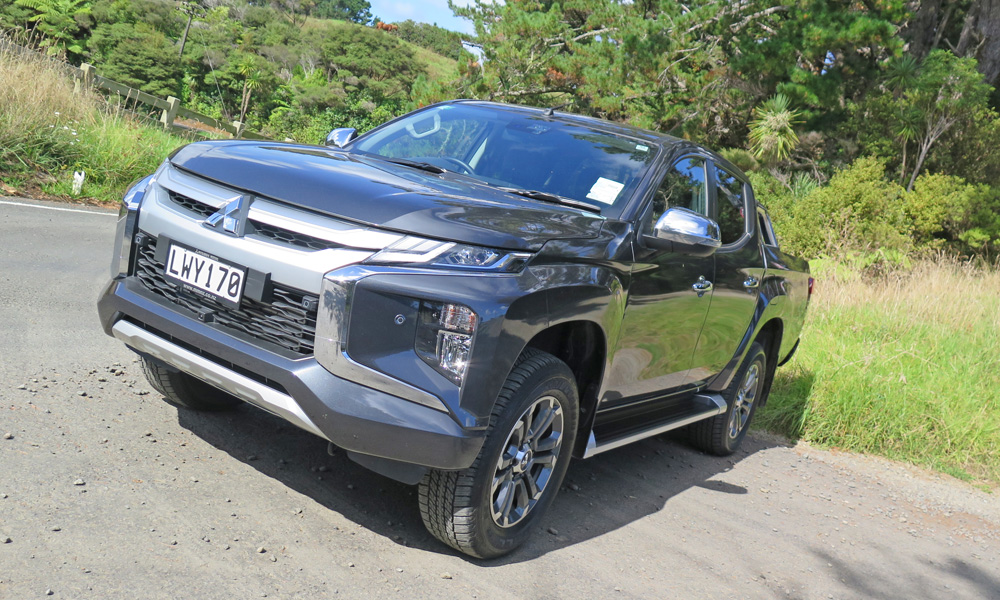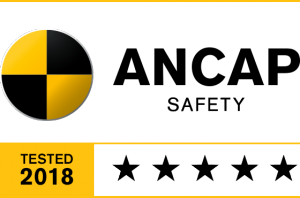
Mitsubishi Outlander PHEV 2022 car review
New Zealand’s 2021 top-selling passenger car has been joined by a new and improved plug-in hybrid electric cousin – the Next Generation Outlander PHEV.
14 January 2021
The latest Mitsubishi Triton launched in Thailand way back in November 2018 with what might be called a heavy facelift rather than a complete model change.

That includes a squarer, more aggressive look assisted by a higher bonnet line and squared-off guards allied to a stiffer body to reduce twist, while under the all-new skin (only the roof carries over) several changes improve off-road performance, hard to test properly without a second vehicle as backup. But this Triton’s predecessor was no slouch in the rough, and it’s clear that these upgrades – including to the suspension and chassis – will only make it better. There’s more ground clearance, now at 220mm, and a new off-road mode for the 4WD which lets you dial in Gravel, Mud/Snow, Sand and Rock settings, for idiot-proof set-up. Off-road mode then adjusts the power, transmission and braking to the optimum for the conditions.
You can also change from 2H, to 4H, 4HLC or 4LLC – the extra L referring to locking the centre diff. In 2WD mode all drive goes to the rear wheels, in 4H most drive goes to the rear though it’ll automatically send up to 50 per cent to the front when needed, while lock ensures a 50-50 split.
Other additions include Hill Descent Control, a new six-speed auto for less engine noise at speed and better acceleration on road, and improvements to the brakes for VRX and GLX-R.
Triton has followed the trend to fit the latest electronic safety systems to commercial vehicles, with forward collision mitigation and lane departure warning on all models.
We sampled the range-topping VRX spec, which adds 18-inch alloy wheels, Blind Spot Warning, Rear Cross Traffic Alert, Multi Around View Monitor and front and rear parking sensors to its armoury, plus heated leather-faced seats with power adjust for the driver. It also features auto on-off and auto high-beam headlights and rain-sensing wipers, an auto-dimming rear-view mirror and even an ultra-sonic ‘miss-acceleration’ system, which will detect if you’ve applied the throttle from rest when there’s something in front of you, to avoid accidental gridlock fender-benders.
The cabin in this VRX takes a small step up thanks to minor changes, which include the addition of two USB chargers and a storage cubby for rear passengers, who also get their own ceiling-mounted air vents.
Overall, we found the VRX Triton exceptionally easy to live with, not least because of how well some of those electronic safety nannies were tuned. It’s always had a fairly refined on-road feel that puts it right up there alongside the likes of Ford’s Ranger and well ahead of the jiggly Toyota Hilux. The electronics take a similarly refined view of life. We’ve often noted Lane Departure warnings set on a hair trigger, annoying on narrow rural roads where you’re frequently close to the white lines. Triton keeps warnings to a judicious minimum – which means you’re less likely to ignore them. It does the same with forward collision mitigation, now with pedestrian alert. Triton seemed better than most at holding its hand, rather than defaulting to early warnings at all times.
Urban warriors will especially appreciate the rear cross traffic alerts and all-round view. Utes aren’t small, and reversing from angle parks, in particular, can be tricky given limited visibility. More than once we blessed the system’s ability to tell what’s coming before the driver eyeball can detect it. Urbanites will also approve the fact that though this latest Triton looks more aggressive, it’s not quite as large as some competitors, so it’s a little easier to live with in tight going.
This latest Triton line-up now offers a 14-model range, starting with a 2WD cab-chassis and topping out with the VRX 4WD wellside we tested here. The aim is clearly to cover everyone from the commercial, farm entry up to the typical dual use family-owned lifestyle ute.
And if the standard spec isn’t enough, Mitsubishi offers a range of after-market options, like snorkels and tow bars, headlight protectors and garnishes, and a roll-top tonneau.
This tester has always rather liked the Triton, especially since the early exaggerated cabin curves were toned down.
There’s still a marked lift to the rear windowline, which may not be popular with a family’s smaller passengers if it restricts their view out. And as a frivolous aside, why is it so many utes provide a vanity mirror only for front passengers – should the driver really have to adjust the rear-view mirror every time they want to check for spinach between the teeth?
Overall, Triton has further lifted its already impressive off-roading talents, while improving its cabin feel, and giving passengers all the benefits of the latest electronic safety systems. What’s not to like?
| At a glance | |
|---|---|
| Models | Mitsubishi Triton VRX 4WD |
| Engine | 2442cc diesel |
| Price | $49,990 |
| ANCAP safety rating | 5 |
| Power and Torque | 135kW at 3500rpm, 437Nm at 2500rpm |
| Transmission | Six-speed auto with sports mode |
| Fuel economy | 8.6l/100km |
| Towing capacity | 3500kg braked |
| 2WD/4WD/AWD | 4WD with centre diff and off-road mode |
| Seating capacity | 5 |
| Luggage capacity/payload | 905kg |
